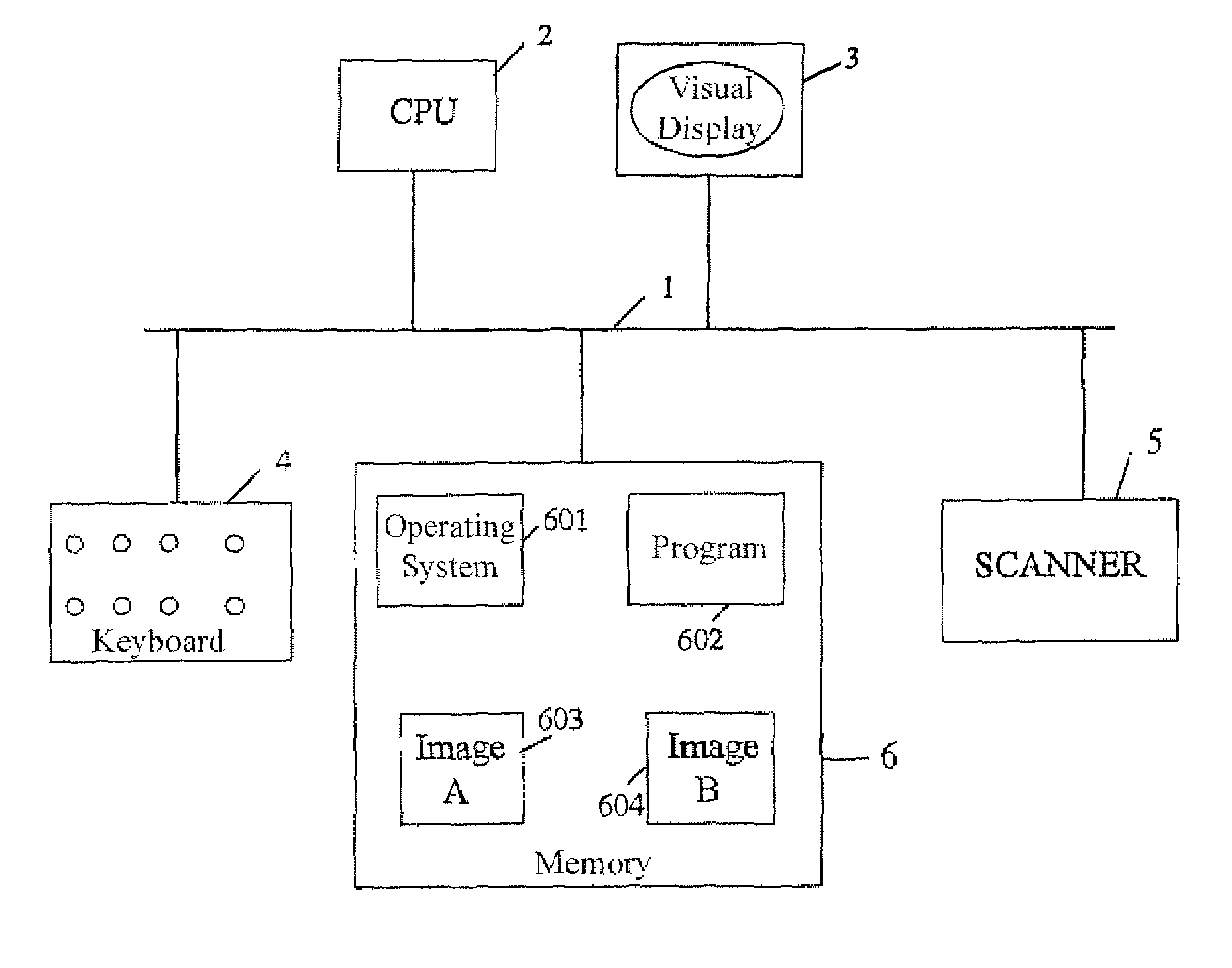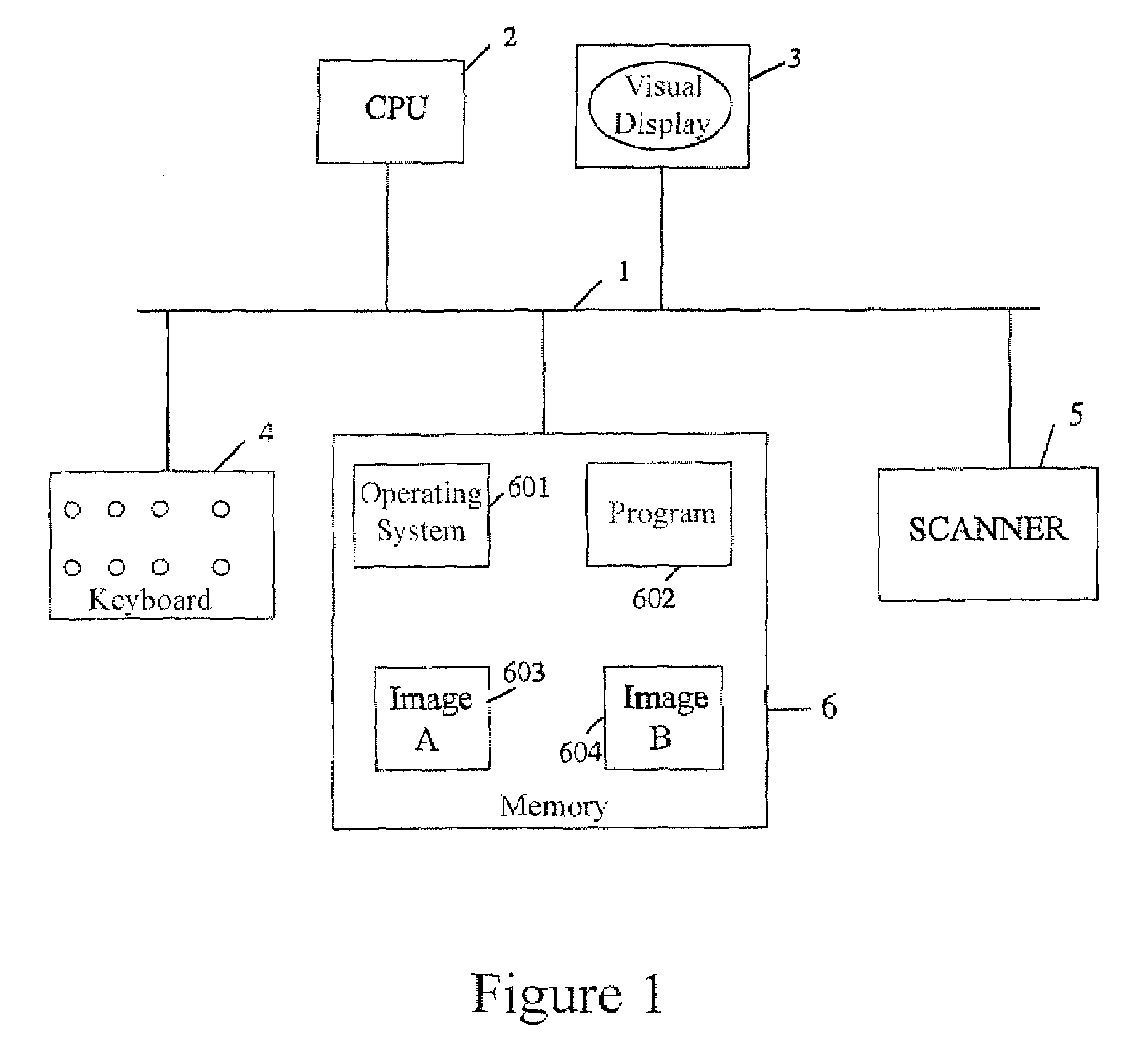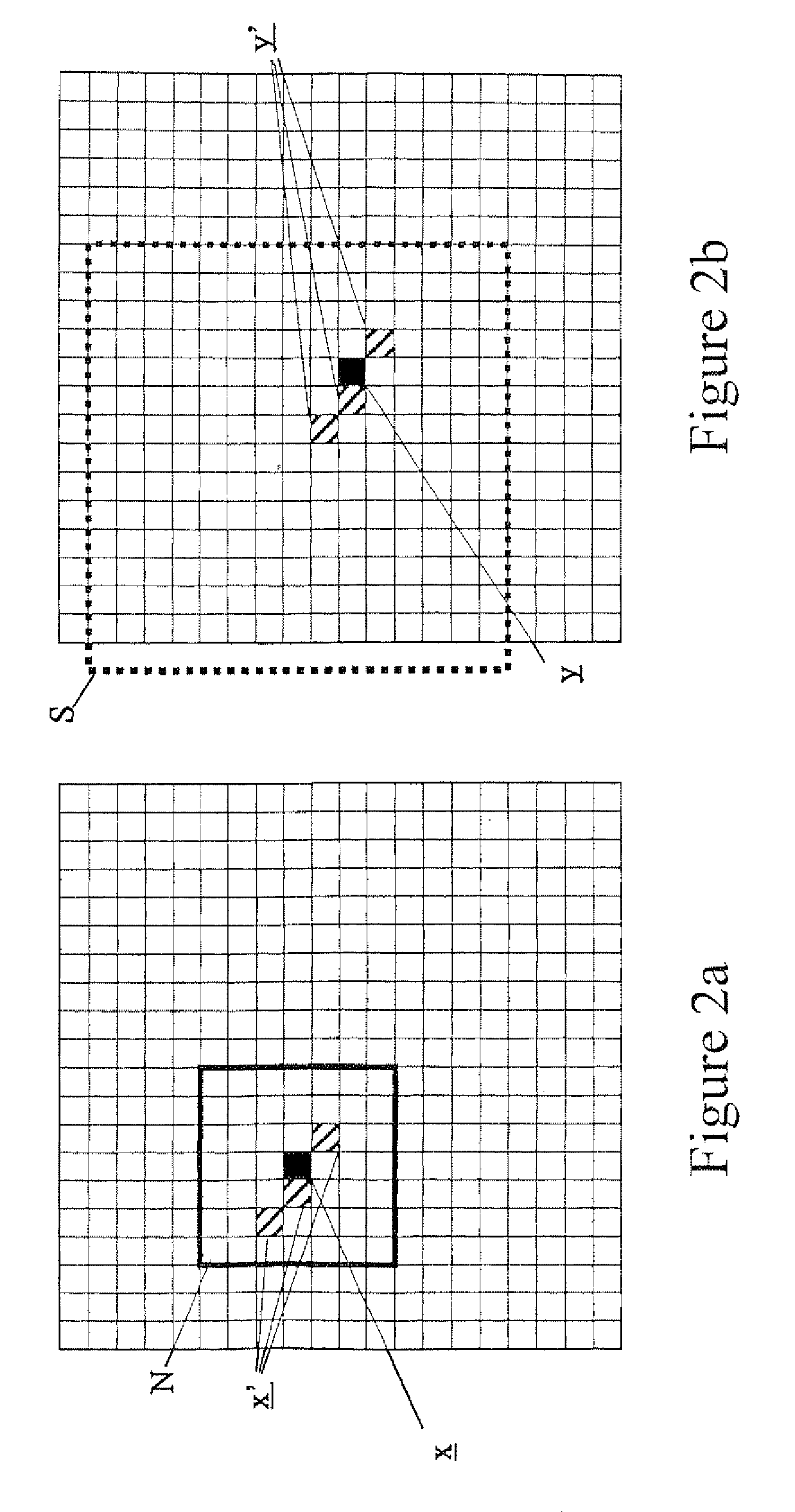Comparing patterns
a pattern and pattern technology, applied in the field of comparing patterns, can solve the problems of reducing performance, reducing computational complexity, and reducing the number of features
- Summary
- Abstract
- Description
- Claims
- Application Information
AI Technical Summary
Benefits of technology
Problems solved by technology
Method used
Image
Examples
example 1
Optical Character Recognition (FIG. 4)
[0084]An image A of the letter B is compared with images B1-B5, of the letters A, B, C, D and E. The rank ordered average scores Va correspond to B, D, E, C, A. The results were generated with t=50, s=3 and ε=2.
example 2
Embedded Recognition (FIG. 5)
[0085]An image A of an ‘X’ shape is compared with another image B1 containing 9 smaller shapes including an ‘X’. The ‘X’ shape is again compared with image B2 with the same 9 shapes except for the small ‘X’ which is altered. The average scores Va are 27.5 and 11.9 respectively, indicating the presence of ‘X’ features in the first and less in the second. The individual scores V for the respective comparisons are shown in the charts. The results were generated with t=50, s=7 and ε=2. A more complicated example of embedded recognition is the identification of known faces in a crowd of people.
example 3
Trade Mark Retrieval (FIG. 6)
[0086]An image A of a special cross shape is first compared with 4 basic shapes B1-B4 including a large cross, each basic pattern representing clusters of similar shapes with high scores between each other. The large cross generates the largest average score Va (43.6). The same special cross in then compared with 4 varieties of cross B5-B8 including a small version of itself (B5) which obtains a maximum score of 50. The chart provides the values of (50−V) for each picture element in the comparison with the large cross—the tall columns indicate the disparity with the ends of the lower legs of the cross. The results were generated with t=50, s=7 and ε=2.
PUM
 Login to View More
Login to View More Abstract
Description
Claims
Application Information
 Login to View More
Login to View More - R&D
- Intellectual Property
- Life Sciences
- Materials
- Tech Scout
- Unparalleled Data Quality
- Higher Quality Content
- 60% Fewer Hallucinations
Browse by: Latest US Patents, China's latest patents, Technical Efficacy Thesaurus, Application Domain, Technology Topic, Popular Technical Reports.
© 2025 PatSnap. All rights reserved.Legal|Privacy policy|Modern Slavery Act Transparency Statement|Sitemap|About US| Contact US: help@patsnap.com



